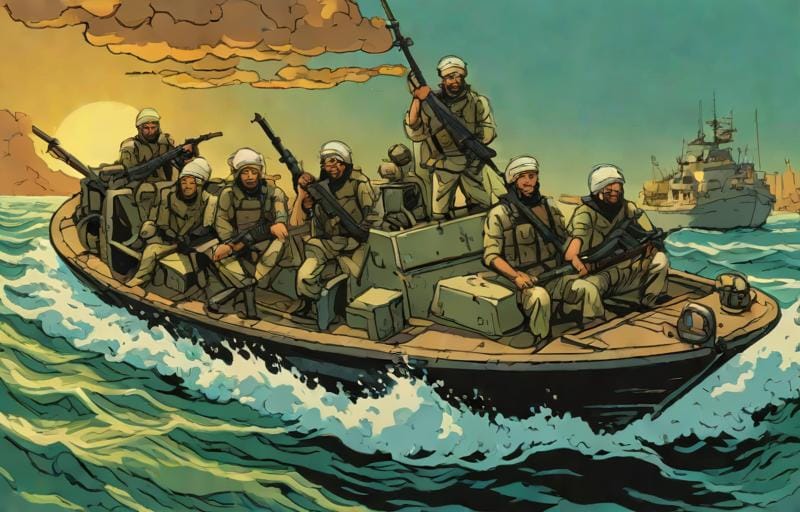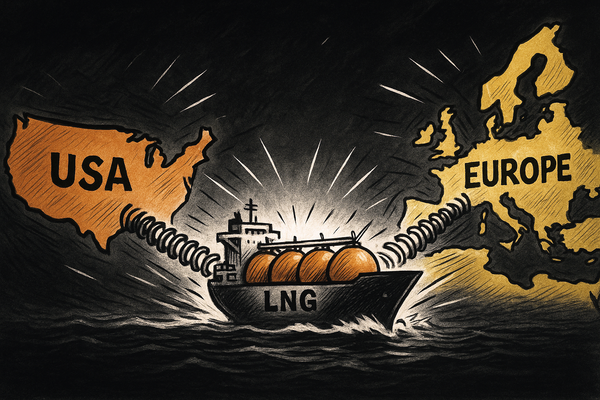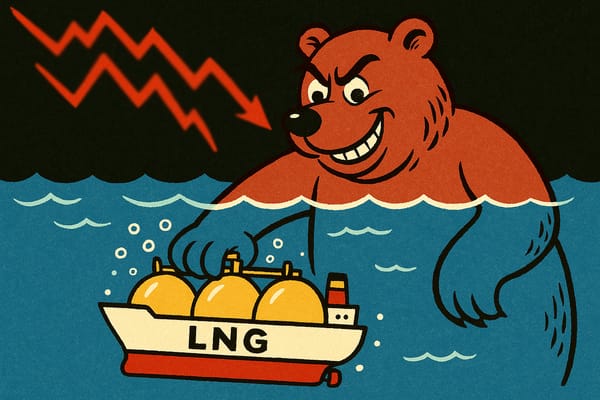The cost of geopolitics
DEEP DIVE: Red Sea shipping crisis reshapes the economics of LNG trade

The Red Sea shipping crisis is forcing Qatar, the world’s cheapest liquefied natural gas producer, to take a much longer (and safer) route to Europe. Analysis by Energy Flux shows that the profitability of Qatari LNG cargoes delivered to Europe drops by as much as one-third once the extra cost of shipping around Africa’s Cape of Good Hope is factored in – making Europe a far less attractive destination for Qatari exports compared to most, if not all, Asian markets.
QatarEnergy began rescheduling European deliveries after suspending shipments through the Red Sea in mid-January. The resultant delays prompted Italian LNG buyers such as Edison and ENI to seek alternative cargoes in the spot market to plug the gap.1
As explored in last week’s EU LNG Chart Deck, spot LNG is now cheaper than most oil-indexed contracts, so in the immediate term Qatar’s European importers such as Italy could make big savings by replacing delayed cargoes in the spot market.
However, the fallout from the Red Sea shipping crisis is not limited to the price paid by European buyers in the coming months. It could also influence where future shipments of Qatari LNG end up, in light of the country’s mammoth LNG expansion project.
There is no clear path to a quick cessation of hostilities deterring LNG vessels from the Red Sea. If safe passage is not restored this year, the situation could bleed into the start of a new era for Qatari LNG: one defined by overcapacity.
Qatar is facing a large increase in its uncontracted liquefaction capacity as contracts expire and its huge North Field LNG expansion projects come online in the Persian Gulf (as well as the Golden Pass project in the US).
This deep-dive explores how the economics of LNG trade in Europe are shifting in light of the Red Sea stoppage — both in the immediate term (spot versus oil-indexed LNG) and over a longer time horizon (Qatar’s approach to marketing spare volumes).
The post also analyses the comparative profitability of shipping Qatar’s unbeatably cheap LNG to Italy versus India and China, and considers how things would pan out if Red Sea tensions were to flare up during a future period of gas market tightness — when Qatar’s spare capacity would be in strong demand.
Let’s get stuck in.
Article stats: 2,300 words, 11-min reading time, 4 original charts / graphs

Member discussion: The cost of geopolitics
Read what members are saying. Subscribe to join the conversation.





